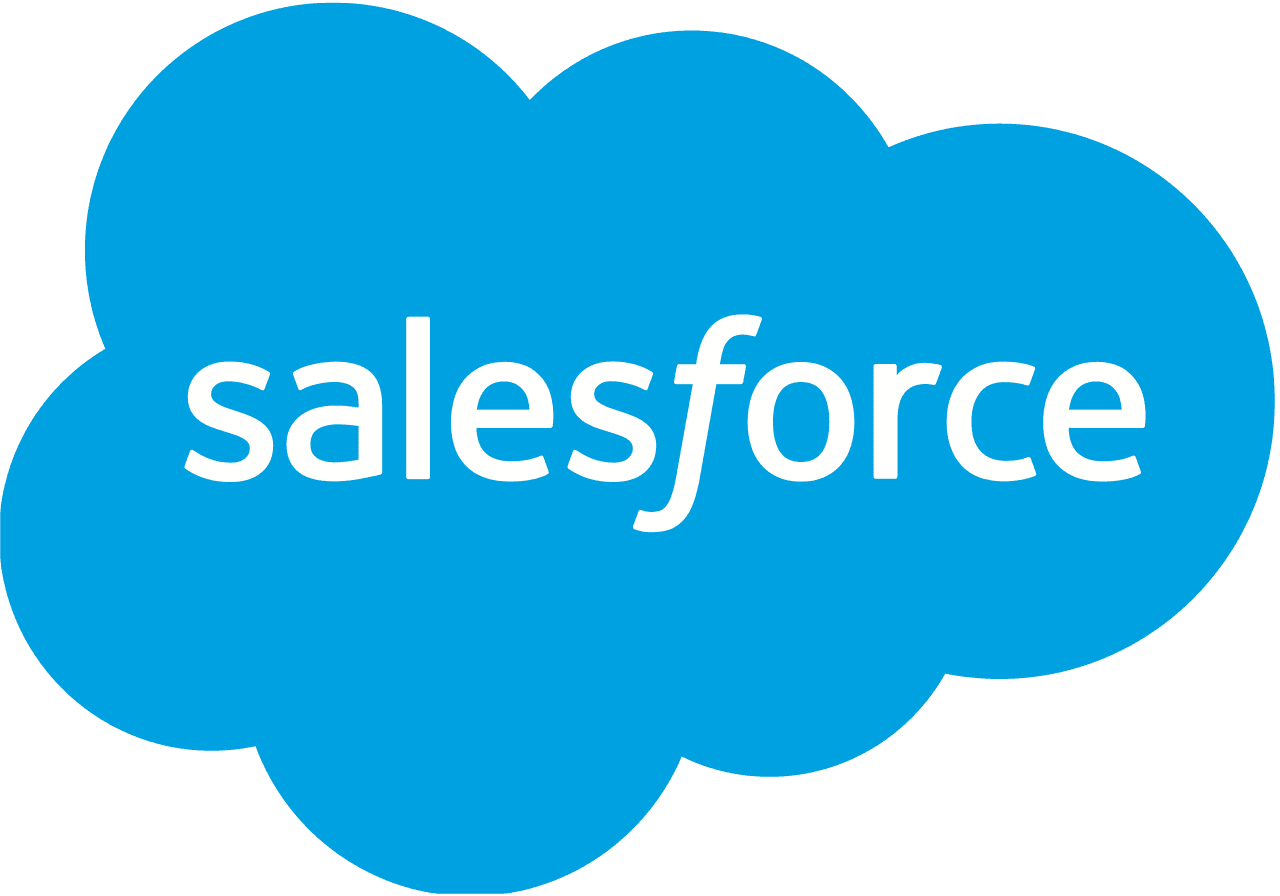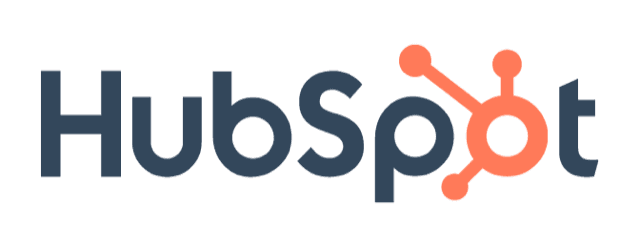Business.com aims to help business owners make informed decisions to support and grow their companies. We research and recommend products and services suitable for various business types, investing thousands of hours each year in this process.
As a business, we need to generate revenue to sustain our content. We have financial relationships with some companies we cover, earning commissions when readers purchase from our partners or share information about their needs. These relationships do not dictate our advice and recommendations. Our editorial team independently evaluates and recommends products and services based on their research and expertise. Learn more about our process and partners here.
Salesforce vs. HubSpot Comparison
Salesforce and HubSpot are two leading CRM platforms for small businesses. Here's how they compare.


Table of Contents
Small and medium-sized businesses (SMBs) use customer relationship management (CRM) software to improve their marketing campaigns, convert leads successfully and provide excellent customer service. Salesforce and HubSpot are two intuitive, feature-full CRM platforms that fit the bill. We’ll examine how these solutions handle contact management, email marketing, automating workflows, reporting and analytics, integrations and more to help your business achieve CRM success with the right platform.

Salesforce vs. HubSpot Highlights
Salesforce and HubSpot are among the best CRM software solutions around. These popular, capable and customizable platforms aim to improve business performance in multiple areas. Here’s an overview of how they stack up:
Criteria | Salesforce | HubSpot |
|---|---|---|
Starting prices | $25 per user, per month | $15 (per user, per month, billed annually) |
Free trial for paid plans | Yes (30 days) | Free tier available to try out the platform |
Contact management |
|
|
Email features |
|
|
Workflows and automations |
|
|
Reporting and analytics |
|
|
Integrations and application programming interface (API) |
|
|
Who Is Salesforce For?
Salesforce is best suited for SMBs that want a highly customizable CRM to boost overall business efficiency and improve sales, marketing and customer service. The software collects, manages and interprets data from marketing and sales teams and customer service departments to create a single data source for everyone. It helps you glean insights to create customized workflows and automations that make your business more effective, responsive and profitable. To learn more, read our in-depth Salesforce CRM review.
Who Is HubSpot For?
HubSpot is a great choice for businesses focused on improving sales and marketing. It’s packed with features like an integrated email marketing suite for optimized and personalized campaigns. Its dynamic active-list creation tool helps marketers pinpoint campaign targets. Sales forecasting and lead quality metrics are particularly useful for sales teams. The platform offers in-depth reporting and analytics tools — invaluable for providing actionable insights for sales and marketing managers, reps and C-suite execs. Our detailed HubSpot CRM review explains additional features and functionality.
Salesforce vs. HubSpot Comparison
Salesforce and HubSpot are top-performing solutions in multiple areas. Here’s a direct comparison of their essential CRM features and pricing.
Pricing
Salesforce’s pricing is midtier in the CRM market. HubSpot’s most feature-packed service plans are at the upper end.
Salesforce
Salesforce has a vast ecosystem of offerings. The costs below are for its Sales Cloud solutions.
Plan | Price | Features |
|---|---|---|
Starter Suite | $25 per user, per month (billed monthly or annually) |
|
Pro Suite | $100 per user, per month (billed annually) | Everything in Starter Suite, plus:
|
Enterprise | $165 per user, per month (billed annually) | Everything in Pro Suite, plus:
|
Unlimited | $330 per user, per month (billed annually) | Everything in Enterprise, plus:
|
Einstein 1 Sales | $500 per user, per month (billed annually) | Everything in Unlimited, plus:
|
Salesforce subscriptions range from $25 to $500 per user, per month. You can opt for the Starter Suite on a monthly basis but all other plans require an annual contract.
Additional features and apps may cost extra. Salesforce offers a generous 30-day free trial so you can test drive the system to see if it’s right for your business.
HubSpot
HubSpot’s free service level, Free Tools, impressed us — few competitors offer such a generous free tier (or any free tier). Its features include SEO recommendations, 2,000 monthly emails and live chat.
Paid plan prices, which are by “seat,” or user, are listed below. Note that HubSpot has various iterations; for simplicity, we’re quoting prices from its Customer Platform, which includes marketing, sales, service, content, operations and commerce tools.
Plan | Price | Features |
Starter | $15 per month, per seat (billed annually) $20 per month, per seat (billed monthly) |
|
Professional | $1,170 per month (for five seats, additional seats start at $45; price reflects an annual commitment paid upfront)
$1,300 per month (for five seats, additional users start at $50 per month; reflects monthly payment with an annual commitment) | Everything in Starter, plus:
|
Enterprise | From $4,300 per month (for seven seats, additional seats start at $75 per month) | Everything in Professional, plus:
|
HubSpot’s Starter level should suffice for businesses with straightforward needs. However, you’ll need the Professional tier if you want to boost your SEO strategy with SEO analytics and add features like A/B testing, deal and company scoring and contact center attribution. This is a significant price jump.
Additional charges can add up. For example, onboarding fees can range from $3,000 to $8,000, depending on your service level. There’s also a $3,600 annual fee for a dedicated internet protocol for marketing emails and a $7,200 annual fee for transaction emails.
Contact Management
Contact management tools help small business owners track and monitor real-time prospect and client interactions.
Salesforce
- Excellent object control: Objects are spreadsheet fields, such as name, contact email or last purchase date, that add further depth to customer and prospect data. We like that Salesforce lets you create and customize unique customer fields, offering enhanced opportunities to analyze and monitor key metrics.
- Deal tracking: Monitor every deal’s stage, expected value and success probability as it travels through the sales pipeline.
- Data security: Only display the data co-workers must see to do their jobs. We appreciate that this protection helps support California Consumer Privacy Act and General Data Protection Regulation compliance and protects your business from data breaches.
HubSpot
- Efficient lead capture: We like that you can capture leads from multiple sources, including website forms, live web chats and mobile devices. Inquirers’ details are automatically placed into a database for follow-up. You can also customize forms to capture unique data fields that will enrich your sales data.
- Robust list management: HubSpot’s dynamic active lists automatically update to show which contacts might be receptive to a sales pitch. It monitors actions you specify, such as clicking on an email message link. HubSpot removes prospects if they don’t take specified actions in a certain time frame.
- Advanced segmentation: We were impressed that you can segment customers and prospects by demographics, psychographics and past interactions, such as content downloads. To receive special offers, create more complex contact groups with shared characteristics.
Email Marketing
Email marketing is a low-cost, effective way to engage with and sell to your target audience.
Salesforce
- Generous email limit: We were impressed that Salesforce Sales Cloud lets you send up to 5,000 email marketing messages daily from the platform on all plans.
- Email integration: Sync Salesforce with popular email services like Gmail and Outlook to better manage standard emails and incoming replies to email campaigns.
- Choice of email templates: Salesforce’s well-stocked library of email templates makes creating the right design much quicker and easier with professional-looking results.

Salesforce CRM includes Gmail integration, so you can view and work with Salesforce data directly in Gmail. Source: Salesforce
HubSpot
- Integrated emailing: We like that you can create, personalize and optimize email marketing campaigns directly from the HubSpot platform. We also like that HubSpot allows up to 2,000 promotional emails monthly, even on its free level.
- User-friendly design tools: We were impressed by HubSpot’s easy-to-use drag-and-drop email design app and customizable templates. Creating branded emails with clear call-to-action options only takes minutes. There’s also a library of free email templates you can amend to suit your needs.
- A/B testing: We were pleased to see an A/B testing feature that lets you send two email designs to see which gets the better results. This tool can help you improve your email marketing campaigns.
- Hyperpersonalization: You can create personalized emails for every person or business in a segmented group on a campaign. If you’re stuck for inspiration, you can use the platform’s in-built AI email writer for help.
Workflows and Automations
Workflow automations save you and your team time, so you can focus on improving the business.
Salesforce
- Action-contingent steps: We like that Salesforce allows you to turn new objects or fields added to a database into actionable processes. For example, when a new lead enters the system and your rep has made contact, you can require them to gather specific details before advancing the prospect to the next stage of the sales funnel.
- Role-specific task assignment: Customize task assignments in Salesforce based on your team’s roles. For example, when an opportunity reaches the “negotiation” stage, send a task directly to your legal or finance team for review. This feature hastens the sales process and ensures the right people are involved at the correct stage.
- AI-integrated automation creator: We were impressed by the AI-integrated Flow Builder. It suggests new and more efficient workflows by monitoring how you use Salesforce. (This feature is only available on the Einstein 1 tier.)
HubSpot
- Wide range of automations: We like HubSpot’s automated workflow-creation flexibility. For example, you can set call reminders and automate customer email responses. These automations streamline the sales process and improve customer management.
- Drag-and-drop editor: We appreciated HubSpot’s intuitive drag-and-drop visual editor for building custom marketing workflow automations. This tool allows users to design sales and service processes without coding. Advanced users can integrate JavaScript or Python for more specialized automations.
- Revenue-based automations: We really liked HubSpot’s handy lead scoring HubSpot assigns a score based on the attributes you choose to prioritize the most viable leads. The integration of AI into this process enhances accuracy by tracking your data and results over time, leading to better forecasting.

Creating workflows in HubSpot is straightforward, with no coding required. Source: HubSpot
Reporting and Analytics
Reporting and analytics tools give SMB owners actionable insights to formulate growth strategies and improve inventory turnaround times.
Salesforce
- Valuable insights tools: We like how easily Salesforce allows you to uncover actionable insights that can boost overall company performance. You can customize its visual dashboards to display how close managers and team members are to achieving key performance indicators and other targets in real time.
- Einstein AI tool: We were impressed by Einstein’s ability to accurately predict deal closures and perform sentiment analysis. It can present managers with real-time data analytics and provide front-line staff with actionable suggestions for improvement.

Salesforce’s visual dashboard reports on sales team activities in real time. Source: Salesforce
HubSpot
- Sales forecasting: We like HubSpot’s campaign-targeting insights, which can save time, optimize ad spend and help you focus on higher-value deals. The ability to predict revenues across multiple sales pipelines is particularly insightful for managers and reps.
- Attribution reports: HubSpot’s attribution reports help you discover your most successful channels and refocus your ad spend. You can track all the actions a client takes before the deal closes to determine your most impactful touch points on their customer journey.
- Traffic and sales analytics: We were pleased to see that you can access detailed reports on website traffic and resulting sales. To get the full picture, you can compare page dwell times, conversion rates and unique visits to analyze pages on an individual level.
Integrations
CRMs can integrate with your other business software apps for better data synchronization across your business.
Salesforce
- Huge selection: We were impressed that Salesforce’s AppExchange offers access to over 5,000 apps and integrations. You can choose the ones you want and add extra functionality to tailor Salesforce to your specific business needs.
- Intuitive navigation: The AppExchange organizes add-ons by industry and use case, making it easy to find the apps you need. We also like that you can choose from various competing apps to find the best one for your needs.
- Advanced API interface: Salesforce’s well-executed API interface allows companies to build under-the-hood custom integrations.
HubSpot
- Extensive marketplace: HubSpot’s App Marketplace has over 1,700 apps to choose from. Around 670 are free of charge and link the platform to popular apps like WordPress, Zoom, Slack and various ad platforms like Meta and Google.
- In-depth app categorization: We found locating the apps we wanted easier thanks to their categorization by use case, HubSpot plan compatibility, integration with various HubSpot features and uni-/bi-directional data flow.
- Excellent API interface: HubSpot’s impressive API interface helps you improve functionality in data syncing, task automation and advanced analytics via custom integrations. (HubSpot imposes a $500 monthly fee if you make more than 1 million API calls a day on its Starter tier.)

HubSpot’s App Marketplace has more than 1,700 apps to choose from. Source: HubSpot
Salesforce vs. HubSpot Summary
Salesforce and HubSpot are both excellent general CRM platforms. We recommend both platforms for companies with the following specific needs.
Salesforce is best for companies that need a highly customizable CRM.
Salesforce is feature-packed and user-friendly. As your business grows, this platform can accommodate ever-increasing operational complexity. Salesforce is a high-level tool that can help you build sales-enabling databases and efficient workflows. Its app store and API functions enhance its functionality and customizability. Salesforce isn’t cheap, but its features, ease of use and flexibility make it an excellent investment.
HubSpot is best for businesses that want to improve their sales and marketing efforts.
If your goal is to generate more leads and boost sales, HubSpot has many valuable features that can help. Its integrated email marketing platform, market segmentation tools, omnichannel capabilities, active lists and in-depth sales forecasting functionality will quickly become indispensable. Given the platform’s flexibility, the Professional package is competitively priced. However, you can start with the free plan to evaluate whether HubSpot suits your needs.
FAQs







